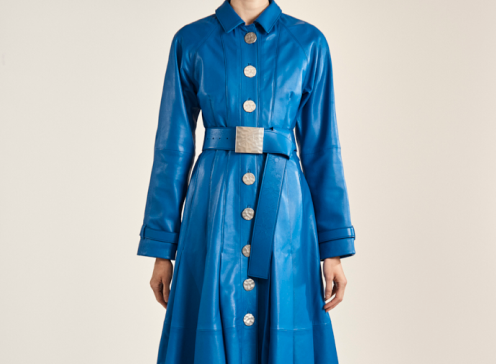This blog post was originally published on Bio Market Insights.
The global textile economy is far from sustainable. Customers have become used to, and demand, high-performance attributes such as wrinkle-free pants, pill-free sweaters and waterproof raincoats. But what most don’t realize is that in order to provide these benefits, nearly everything we wear is coated with finishing chemicals such as polyurethane, chlorine or formaldehyde.
These chemicals come into contact with our skin through daily wear, and when we wash our clothes, they can accumulate in the environment—contaminating our drinking water and endangering wildlife. Recycling doesn’t help, as synthetic finishing agents only become further embedded into recycled materials. And as supply and demand increase, toxic chemicals in the supply chain increase along with it. It’s a vicious cycle, and one that urgently needs to be broken.
As shoppers learn of these health and environmental risks, they demand safer options. But without commercially viable, sustainable alternatives available, even the most well-intentioned brands have their hands tied. Customers aren’t going to forgo the performance benefits they’re used to, and businesses won’t manufacture clothing that doesn’t perform to customer expectations. To break the petrochemical cycle, we need to create alternatives that are scalable, environmentally conscious, fully circular and performance based. In short, we need green chemistry.
For us, the replacement for harmful finishing chemicals comes from an unexpected source: natural silk.
The silk fiber is one of nature’s greatest designs: a natural polymer made from a single protein, fibroin. At Evolved By Nature, we’ve developed a way to convert this protein into its purest liquid form—enabling us to create green chemicals that enhance the performance and sustainability of textiles.
We extract the pure fibroin by dissolving silk cocoons and manipulating its molecular structure to create a vast library of green chemicals, which we call Activated Silk technology. These chemicals deliver many of the performance qualities that manufacturers currently rely on synthetic chemicals for, such as waterproofing, wicking, anti-pilling and more. And because it’s naturally biocompatible and biodegradable, Activated Silk-coated textiles can be recycled without concern.
With hundreds of possible molecular compositions, the Activated Silk chemistry platform can be used across a diverse array of industries—from personal care products to homewares, medical devices and beyond. It’s scalable, cost-competitive and can be seamlessly integrated into existing manufacturing processes. We’ve already partnered with a range of brands and manufacturers to make their products healthier and more sustainable. And we’re just getting started.
As conscious shoppers demand transparency, the $6.2T petrochemicals industry is poised for evolution. But without an alternative feedstock to create clean, effective chemicals at scale, most companies remain petroleum dependent. Innovation in green chemistry is critical to reducing our reliance on petrochemicals, enabling the creation of products that do not harm people or the planet. Nature holds the answer—so let’s start there.
This comment piece was written by Greg Altman, CEO of green chemistry company Evolved by Nature.
Carlos J. Bosques, Ph.D. Vice President of R&D/Innovation at Evolved by Nature, will be speaking at the World Bio Markets Conference, the leading assembly for the bio-based economy, in Amsterdam, the Netherlands.
